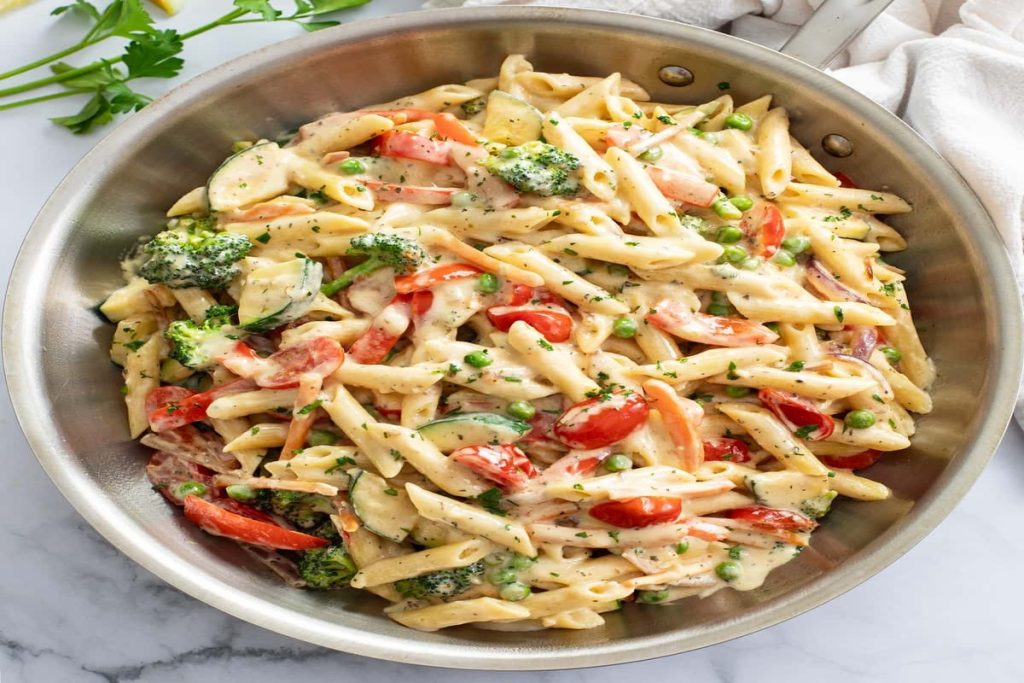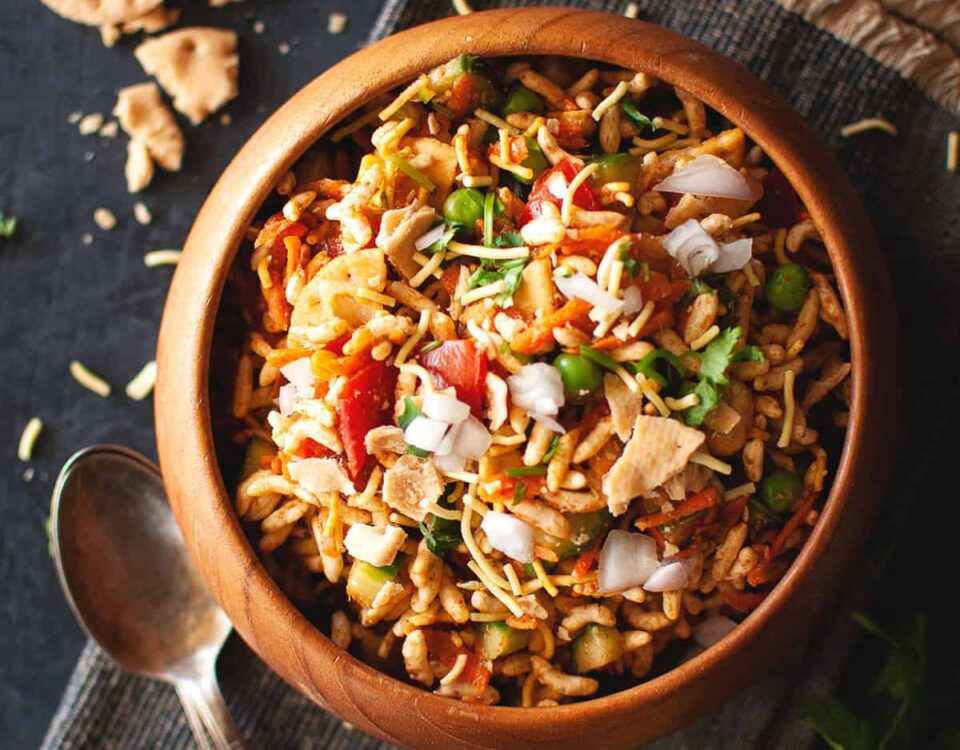
Panna Cotta Recipe: An Elegant Italian Dessert

A Scoop of History: Making Authentic Gelato at Home
Pasta Primavera Recipe: A Fresh and Flavorful Italian Delight
Pasta Primavera is a vibrant and colorful Italian dish that celebrates the freshness of seasonal vegetables. Known for its light, yet satisfying flavors, Pasta Primavera has become a beloved meal for many. In this comprehensive guide, we will explore the history of Pasta Primavera, discuss essential ingredients, provide a step-by-step recipe, and share tips to ensure your Pasta Primavera is perfect every time. Additionally, we will include variations and nutritional information to cater to different dietary needs and preferences.

History of Pasta Primavera
Despite its Italian name, Pasta Primavera is actually a creation of Italian-American cuisine. The dish was invented in the 1970s by Sirio Maccioni, the owner of the famous New York restaurant Le Cirque. According to legend, Maccioni created the dish while vacationing in Canada, using fresh vegetables available at the time. It quickly became a hit at Le Cirque and soon gained popularity across the United States.
Pasta Primavera, which means “spring pasta” in Italian, was named for its use of fresh, seasonal vegetables. The dish has evolved over time, with chefs and home cooks adding their own variations and touches, making it a versatile and widely enjoyed meal.
Essential Ingredients for Pasta Primavera
To make a classic Pasta Primavera, you will need the following ingredients:
- 12 ounces pasta (such as penne, farfalle, or spaghetti)
- 2 tablespoons olive oil
- 2 cloves garlic, minced
- 1 cup cherry tomatoes, halved
- 1 cup broccoli florets
- 1 cup bell peppers, sliced
- 1 cup zucchini, sliced
- 1 cup asparagus, cut into 1-inch pieces
- 1/2 cup peas (fresh or frozen)
- 1/2 cup grated Parmesan cheese
- 1/4 cup fresh basil, chopped
- Salt and freshly ground black pepper
- Juice of 1 lemon
- Red pepper flakes (optional, for a bit of heat)
Step-by-Step Recipe for Pasta Primavera
Prepare the Vegetables
- Wash and Cut Vegetables: Wash all the vegetables thoroughly. Cut the cherry tomatoes in half, slice the bell peppers and zucchini, cut the asparagus into 1-inch pieces, and separate the broccoli into small florets. If using fresh peas, shell them.
Cook the Pasta
- Boil Water: Bring a large pot of salted water to a boil.
- Cook Pasta: Add the pasta to the boiling water and cook according to the package instructions until al dente. Reserve 1 cup of the pasta cooking water, then drain the pasta and set aside.
Sauté the Vegetables
- Heat Oil: In a large skillet or sauté pan, heat the olive oil over medium heat.
- Cook Garlic: Add the minced garlic and cook for about 1 minute, until fragrant.
- Add Vegetables: Add the broccoli, bell peppers, zucchini, and asparagus to the pan. Sauté for about 5-7 minutes, until the vegetables are tender but still crisp.
- Add Tomatoes and Peas: Add the cherry tomatoes and peas to the pan and cook for an additional 2-3 minutes.
Combine Pasta and Vegetables
- Mix Together: Add the cooked pasta to the skillet with the vegetables. Toss to combine.
- Add Reserved Water: Gradually add some of the reserved pasta cooking water, a little at a time, until you reach the desired consistency. This helps to create a light sauce that coats the pasta and vegetables.
- Season: Season with salt, freshly ground black pepper, and red pepper flakes (if using).
Finish the Dish
- Add Cheese and Herbs: Remove the skillet from the heat and stir in the grated Parmesan cheese and chopped fresh basil.
- Add Lemon Juice: Squeeze the juice of 1 lemon over the pasta and toss to combine. This adds a bright, fresh flavor to the dish.
Serve
- Plate the Pasta: Transfer the Pasta Primavera to serving plates.
- Garnish: Garnish with additional Parmesan cheese, fresh basil, and a drizzle of olive oil if desired.
- Serve Immediately: Enjoy the Pasta Primavera hot, while the vegetables are still vibrant and the pasta is perfectly coated.
Tips for Making the Perfect Pasta Primavera
- Use Fresh Vegetables: The key to a great Pasta Primavera is using fresh, seasonal vegetables. This ensures the best flavor and texture.
- Cook Pasta Al Dente: Be sure to cook the pasta until it is al dente, meaning it should be tender but still have a slight bite.
- Don’t Overcook the Vegetables: The vegetables should be tender but still crisp. Overcooking them can result in a mushy texture.
- Adjust Seasoning: Taste and adjust the seasoning as needed. The balance of salt, pepper, and lemon juice is crucial for bringing out the flavors of the dish.
- Customize the Vegetables: Feel free to customize the vegetables based on what is in season or what you have on hand. Green beans, snap peas, and spinach are all great additions.
Variations of Pasta Primavera
Creamy Pasta Primavera
For a richer version, add 1/2 cup of heavy cream to the skillet after sautéing the vegetables. Simmer for a few minutes before adding the pasta and cheese.
Vegan Pasta Primavera
Replace the Parmesan cheese with a vegan cheese alternative or nutritional yeast. Ensure the pasta is egg-free for a fully vegan dish.
Protein-Packed Primavera
Add cooked chicken breast, shrimp, or tofu to the pasta for an extra boost of protein. Sauté the protein separately and add it to the dish just before serving.
Spicy Pasta Primavera
Increase the amount of red pepper flakes or add a diced jalapeño or chili pepper to the vegetables for a spicier version.
Nutritional Information
Pasta Primavera is a nutritious and balanced dish. Here’s an approximate nutritional breakdown per serving (based on a 4-serving recipe):
- Calories: 350
- Protein: 12g
- Fat: 12g
- Carbohydrates: 50g
- Fiber: 6g
- Sodium: 250mg
Conclusion
Pasta Primavera is a delightful and versatile dish that showcases the best of fresh, seasonal vegetables. Its origins in Italian-American cuisine have made it a favorite for many, and its simplicity and flexibility make it perfect for home cooks. By following this step-by-step recipe and using high-quality ingredients, you can create a delicious and colorful Pasta Primavera that is sure to impress.
Whether you stick to the traditional recipe or experiment with different variations, the key to great Pasta Primavera lies in the freshness of the vegetables and the balance of flavors. Enjoy making and savoring this vibrant dish, and don’t forget to explore more international recipes and cooking tips on our website. Happy cooking!


